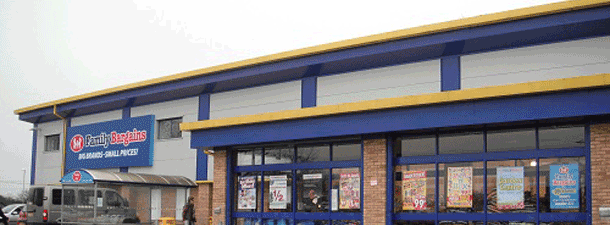Rapleys offer a review of 2011 and a look ahead for the commmercial property market for 2012.
No predictions can be made without a short reflection on 2011.
The year started off optimistically with many people believing that there would probably be a significant recovery in the general economy, which in turn would buoy the property market.
The fact of the matter was however that 2011 was always set to be a difficult year, especially bearing in mind the necessity to drive down national debt, meaning a significant cut in public expenditure, leading to considerable unemployment. Slowing growth, combined with increased taxation and rising inflation, led to consumer caution and, in turn, reduced retail expenditure.
The High Street suffered, as did some out of town retailers and there were numerous administrations, including Barratts Shoes (twice!), TJ Hughes, Habitat, Focus DIY, JJB to name but a few.
The prime investment market held up well, assisted in part by low interest rates, but the secondary and tertiary markets suffered with the yield gap widening.
Residential property performed well in central London, buoyed up by foreign investment, taking advantage of advantageous sterling rates, but elsewhere performance was lacklustre at best and suffered falling prices at worst.
Finally, the year ended with the Euro crisis!
So what about 2012? The threat of a double dip recession (perhaps we are already in it?) will undoubtedly keep interest rates at the current level for at least 6 months if not longer, especially now inflation is falling.
The FTSE is set to be unsettled throughout the year as are other investment media, except prime property. We predict that prime yields will stay at their current levels and could even fall slightly. Secondary and tertiary properties however will suffer.
Occupier demand will be sluggish, with rental levels remaining static at best and falling in many instances.
The High Streets will continue to suffer, hit by a lack of consumer expenditure and, moreover, the continued growth of the Internet. Out of Town retail will be difficult, although the growth in the food supermarket sector is set to continue. Even in this sector the results now being announced are a mixed bag.
Residential values are again likely to fall in many areas (except the South East) with the consequent pressure on land values, which will remain flat and may even fall further. Many sites will remain unviable to develop. New housing starts are unlikely to increase and could fall considerably.
Bank lending will remain limited, as the major clearing banks endeavour to continue to rebuild their balance sheets.
So overall we are set for another difficult 12 months – something we seem to be getting used to! In our view, a recovery is still on a somewhat distant horizon, but 2012 is likely to see the bottom of the market and there will be opportunities for occupiers with good management to rebalance their portfolios and continue to drive down cost, developers to consider strategic opportunities and for investors to buy selectively
but well.
Our detailed review follows below:
Rating
Since the 2010 Rating Revaluation came into effect it is clear that the Government are putting pressure on the Valuation Office to dispose of appeals quickly. We are experiencing unprecedented numbers of appeals being programmed for discussion with the Valuation Officer (VO).
The VO is concentrating on appeals of the “bulk classes” of properties such as High Street shops, offices and warehouses/factories on industrial estates. Appeals in respect of specialist properties such as car showrooms, petrol filling stations, food superstores etc will be left until later, many discussions not starting until early 2013.
The Government continues to “tinker” with legislation and the new procedures that were introduced on 1st January 2011. Now if an appeal is not resolved six weeks prior to the Target Date the appellant’s representative has to submit a detailed Statement of Case and two weeks later the VO must respond. This extra layer of bureaucracy is unnecessary. The Regulations are costing ratepayers and the Government money as unnecessary time is being expended. Professional bodies have made representations to the Tribunal Service so far without any success.
Due to the significant increase in the UBR (5.6%) from 1st April 2012 the Government have once again proposed a deferral system. Detailed proposals are awaited but it will undoubtedly cause an administrative nightmare for Local Authorities.
Insofar as empty rates in England and Wales are concerned, ratepayers continue to take avoidance measures and with the revenue raised from empty rates falling year on year we suspect the Government will try to close some of the loopholes in the Spring budget.
There are different topical rating issues in Scotland, namely; the effect on assessments of falling market rental values, proposed changes to empty property rate relief and the introduction of a tobacco and alcohol rate supplement on large retail subjects.
In Scotland assessments can reflect changes in falling market rental values through the use of material change of circumstance (MCC) appeals and a recent test case resulted in significant reductions in 2010 Valuation Roll assessments for shops in Kirkcaldy because local market rental values had fallen below the 2008 tone of the roll level. This may be appealed but if upheld, many Scottish ratepayers could
benefit from substantial rate refunds as similar appeals are resolved around the country.
The Scottish Executive is proposing changes to empty property rate charges. The new proposals require primary legislation in the Scottish Parliament and cannot therefore be introduced until 1st April 2013.
Under the new proposals rate relief for vacant listed buildings and industrial subjects will remain unchanged but for vacant commercial subjects the empty rate charge will increase from 50% to 90% after the 3 months period of grace.
The tobacco and alcohol rate supplement will be introduced on 1st April 2012. It will apply to all large retail premises (i.e. assessed at or over NAV/RV £300,000) where both tobacco and alcohol products are sold.
The supplement is intended to produce £30 million in 2012/13 and £40 million in each of the two subsequent rate years and of the 250 (approximately) affected subjects the impact will be significant with an average charge of £120,000 per subject in 2012/13. Tthe 250 (approximately) affected subjects the impact will be significant with an average charge of £120,000 per subject in 2012/13.
Both the imposition of the supplement and the change to the empty rate legislation will be opportunities for submitting and prosecuting MCC appeals in respect of the affected assessments.
Retail
In 2011, we saw the demise of many household names such as Habitat, T.J.Hughes, Jane Norman and Barratts Shoes.
Our prognosis for what might lie ahead this year has a certain déjà vu feeling. We predict that there will be the usual post Christmas casualties with a flurry of administrations by the end of January. Furthermore, the likelihood is that there will be further failed retailers names to add to the list around the March Quarter.
The theme going forward remains unchanged and pre Christmas tabloid headlines warned of ‘Carnage in the High Street’ and ‘Nightmare before Christmas’, which were a repeat of last year’s forecast of doom & gloom. Retailers claiming that it would be a ‘make or break Christmas for them” was not a surprise, for many it broke them.
It is clear that the phenomenal growth of online sales and the rise of mobile retailing have changed todays High Street retail landscape and will continue to do so. Many retailers continue to see their sales dramatically reducing by the impact of the internet, coup led with low levels of consumer confidence to go out and spend. Also the current economic situation has seen the birth of the “value” retailer. Nationally
recognised High Street faces are being replaced by 99p Stores, Home Bargains, B&M Bargain Stores, Poundstretcher, Poundland and so the list goes on. They will continue to prosper in the years ahead.
We consider that, having already experienced a year of austerity, the consumer economy will be harder in 2012. Shopper’s credit has disappeared and inflation has whittled away the value of earnings. This combined with the fear of unemployment has made people more cautious about proposals for future spending.
David Cameron, of course commissioned Mary Portas, the television presenter and self-styled ‘Queen of Shops’, to carry out an independent review of the High Street. The publication of ‘The Portas Review’ has done little to convince retailers and landlords of brighter prospects ahead. A case of ‘too little, too late’ and a review of the state of the High Street in town centres should probably have been undertaken 10
years ago.
It will be interesting to see whether the summary of recommendations in ‘The Portas Review’ (all 28 of them) find favour with landlords, Local Authorities, Government and retailers, although clearly an element of co-operation and co-ordination must be beneficial in any attempt to reclaim the core and strength of town centres and to produce a turnaround of the much needed recovery of our retail centres in future years.
What will be counterproductive however will be the suggested “embargo” on out of centre schemes. The Government needs to give the consumer what they want or they will play into the hands of the internet even more.
Food Retail
What of the food market sector in 2012?
Our predictions in contrast to the Non-Food Market is that this sector will continue to grow with the major foodstore operators continuing to seek nationwide representation with expansion of existing stores and the acquisition of new outlets. The competition for prime locations where retailers are not or currently under represented will continue unabated.
We believe that the planning process will continue to offer (albeit arguably slightly less) resistance to cater for the larger store formats. Activity with the retailers’ quest for smaller ‘C-Store formats’ will continue to grow.
Morrisons have already outlined their plans and have launched trial concepts in the North for their ‘M-Local’ formats. Their wider aggressive expansion programme is targeted to add 25 stores this year. Waitrose have announced proposals for 20 new ‘Little Waitrose’ convenience shops to be developed mainly in and around London by the end of 2012, to compliment their existing convenience branch outlets.
Sainsbury’s have announced a 16% floor space growth over the last 2 years and are looking to add a further 1.25 million sq ft over the next three years but this will be less than the Morrisons programme. Tesco have announced they will reduce their store opening -a result of their poor trading performance?
We will see a strong appetite from food retailers to accommodate what is clearly consumer led demand and a requirement to satisfy the convenience goods market.
Motor Trade & Petrol Forecourts
Along with many other areas of the economy, trading conditions for automotive dealers became more challenging through 2011.
SMMT reported new car registrations for 2011 have fallen 4.4% to circa 1.94m, against 2.03m in 2010 and commentators are predicting a further slide for 2012.
Transaction activity for vacant dealership stock has remained very subdued. Those dealers that are acquiring have invested in businesses representing core brands with whom they are in partnership. In particular, Jardine and Marshalls have continued to take advantage of the depressed marked with a succession of acquisitions over the past twelve months. Leasehold property has been favoured against freeholds particularly where flexibility can be structured into the deal.
Looking forward, 2012 appears equally challenging. Manufacturers will have to fight hard to maintain and grow their share of what is expected to be a stagnant or falling market. There are likely to be further casualties as the general trend towards further consolidation occurs, not only at the dealer end of the market but also within manufacturers. The recent collapse of Saab, coupled with Renault’s recent
announcement that it is to shed 60 dealers, is perhaps reflective of this. Dealers representing Korean, Malaysian and emerging far East brands are likely to grow their market share at the expense of the more established European and North American brands, albeit premium brands such as Audi, Volkswagen, Land Rover, BMW and Mini remain in strong demand.
Against this difficult backdrop many dealers are facing the introduction on new franchise agreements in the run up to May 2013, a further reason for caution.
Specifically in relation to property, containing costs and sweating assets will be uppermost on dealer’s agendas. With circa 4,700 new car showrooms across the UK, further closures are likely to occur in marginal trading locations. Fortunately, these properties are often prominently positioned and in those circumstances value is typically underpinned by other roadside operators/retailers such as Majestic Wine, Topps Tiles and both the discount and main supermarket chains in addition to the fast food restaurant/drive thru operators.
With capital remaining constrained, property prices are also likely to come under further downwards pressure, albeit rental levels appear to have stabilised. Conversely there remains a strong appetite for well let automotive stock from investors, particularly where there is an element of gearing within the lease and where the asset is fully brand compliant. Yields have hardened considerably in what continues to be a
sought after sector for certain funds.
In respect of the forecourt market, research from the AA indicates that fuel sales have already fallen by 15% over the past three years and the short term prospects appear equally as challenging with fuel duty increases in the pipeline.
Whilst operating only 14% of the forecourts within the UK, the main Supermarket operators currently account for 38% of all fuel sales. Pricing promotions are now a regular feature of the market with retailers running National advertising campaigns offering significant discounts.
There have been some interesting developments on the fuel supply chain with Rontec consortium purchasing Total’s UK retail business and immediately selling over 200 sites to Shell, whilst distribution operations have been offloaded to DCC Plc (GB Oils).
Elsewhere new brands are establishing a foothold in the UK market such as Harvest & Apple, whilst several of the more established brands are retrenching, with Jet announcing its withdrawal from the South West region.
With fuel volumes and margins under pressure, successful dealers have been forced to seek alternative profit streams where possible. Convenience retailing is a dominant theme across the forecourt market today. Branded coffee and hot food offers abound, whilst automatic rollovers have been replaced with hand valeting and jet wash facilities.
“New to industry” sites across the UK remain few and far between. Compared to the 20,000 plus forecourts over twenty years ago there were, according to latest figures from RMI, some 8,765 operational forecourts remaining in May 2011. Closures have resulted in fuel ‘deserts’ in certain rural areas. Evermore complex Environmental and Planning Regulations have restricted the supply of suitable sites and the costs of
developing are prohibitive to all but the largest companies.
Despite the tough trading conditions, forecourt demand has proved more resilient than most in comparison to other commercial property markets. Whilst values have fallen 10% -15%, demand for established well located sites remains relatively buoyant particularly within the leased sector. This is more so throughout the Midlands and Southern parts of the UK where unopposed trading positions can be identified.
That having been said, a pipeline of “new to industry” sites seems as far away as ever and a further downward pressure on forecourt numbers seems almost inevitable in the face of ever increasing dominance from the Supermarket operators.
Business Space
The business space sector in 2011 experienced very similar low levels of activity, as it did in 2010. There was selective activity at the top end in the prime sectors whilst the amount of secondary and tertiary transactions declined further. Vacancy rates remain at or near historically high levels as whilst primer accommodation is being taken up, more second-hand property is coming into the market. In this area there have been relatively few transactions and we see this trend being likely to continue in 2012.
This situation leaves well-funded developers/investors, who have been sitting on new schemes that they mothballed when the market collapsed, with a difficult judgement as to if and when to roll these projects out. Talk of double dip and further debt crisis creates considerable uncertainty which, of course, makes resolution on commitment a quandary. This is particularly the case in the office sector where gestation
periods for developments are 2 or 3 years whereas, relatively speaking, warehouse/industrial is “easier” with development periods of generally less than 12 months.
In the warehouse sector nationally, activity throughout the last 12 months has continued to be driven largely by the activity of retailers who continued to adjust their distribution networks. This has meant that a large amount of the new stock that was speculatively developed in the distribution hot-spots 2 to 3 years ago has now been taken up. Some level of confidence by the developers still holding vacant stock is probably justified going forward, in direct contrast to where they stood this time last year. Of course this is not to suggest that we will see a return to speculative development in the coming year but where vacant stock is being taken up and pre-let deals are being done, there will be greater balance in the negotiating positions of the parties.
With exporting manufacturers continuing to see limited growth as a result of the competitive advantage brought about by the weak pound sterling, there will be further selective expansion/reorganisation of facilities in the industrial heartlands of the UK.
Take up in the office sector across major centres has been more buoyant than the previous 12 months and landlords of prime properties were in a position where they did not need to make concessions in terms of headline rent and tenant incentives to the extent perhaps anticipated because those few requirements that were out in the market generally had a limited number of options capable of meeting size and location
criteria. Occupiers who may have deferred decisions on moves/acquisitions are likely to be more inclined to bring these forward because they recognise that over the next 12 months the available stock they are able to consider will be reduced further.
In the secondary and tertiary business space sectors the market will continue to be very difficult in the coming period and existing tenants and landlords who find themselves with vacant stock will become increasingly desperate to secure any limited occupational demand. In these circumstances, it will be especially awkward for existing tenants who may be constrained by their existing lease structures as to the incentives they can offer and generally they are always going to be in danger of being “trumped” by a landlord who has no such constraints. For landlords with the burden of empty property holding costs it will become ever more relevant, particularly in the industrial market, to consider demolition as a realistic option in mitigating cost in the absence of any realistic prospect of reoccupation in the foreseeable future; this is in itself a concern because such secondary and tertiary properties are usually the low-cost seed-bed for new/smaller businesses as the economy enters a recovery/expansion phase.
Investment
There was little evidence of frailty in the direct property investment market in 2011 for prime assets. Even though there still remains the spectre of a “double dip” in the economy the prime end of the market has seen further hardening of yields and whilst we do not anticipate significant yield improvements on prime property in 2012, we do predict that institutional demand will remain strong, albeit with a slight drop
in total returns for the right assets.
Although bank lending will remain tight over 2012 we anticipate that further receiverships and administrations will mean more activity from the banks in the sale of assets. Loan book sales seem to be a certainty at some stage but predicting when is very difficult to call. Depending on the type of stock that is made available then values may well be affected, certainly in the secondary market where we expect there to be further falls in values. Furthermore, we do not expect the banks to loosen their grip on the tight lending market despite sustained pressure from central Government. Bank balance sheets in 2012 may need further support as the economy weakens.
Stock selection in 2012 will see keen competition for well let, long term assets that have been let at the appropriate market rents in the current economic climate. Geared rent reviews will continue to attract good levels of interest from purchasers with foodstores continuing to be at the top of many institutional shopping lists. Yields for prime foodstore investments are likely to continue to improve.
Demand for central London stock will continue along with good assets in the main provincial centres. Competition for non prime assets will be limited with investors seeking the shelter of security in their investment strategy for 2012.
Town Planning
2012 will see the continued evolution of a number of significant initiatives affecting the planning system in England and Wales. They are radical and wide-ranging, and will impact most areas of planning. In particular:
. The Localism Act will come into force in April;
. The National Planning Policy Framework (NPPF) is likely to be published in April (albeit, it would appear, in a manner somewhat “watered down”, in comparison to its controversial draft);
. Bespoke planning regimes for the 28 new Enterprise Zones are likely to emerge;
. The Community Infrastructure Levy will be introduced albeit, we suspect, in a somewhat uneven manner, and
. Changes will be introduced to heritage controls and the planning appeal system.
The nature of the changes mean that uncertainty is the key note of commentators’ views on 2012. It will certainly be interesting! Some of the changes seem to be incompatible and the outcomes therefore are doubly uncertain. In particular:
Some of the changes seem to be incompatible and the outcomes therefore are doubly uncertain. In particular:
Will Localism give greater powers to local communities, or will limited resources reduce the extent to which planning authorities can support the emergence of neighbourhood planning?
Given that retail development has been the driving force behind much of the development which has taken place in the last year, will greater concerns about our Town Centres lead to further restrictions on out-of-centre development, with adverse implications for regeneration which might otherwise have been driven by it?
Will Government Planning Policy really change as radically as the objectors to the draft NPPF would have us believe, or is the Coalition true to its word on protecting our natural and heritage assets?
Will the Government’s review of the planning system yield the deregulation that we have been promised so many times before, with a much needed boost to economic growth resulting?
In Scotland, it is expected that the chief area of change will be an increase in planning application fees.
It will be an interesting year!
Commercial Development
With development finance continuing to be in short supply the lid is likely to remain firmly shut on the development finance pot. With this being the case, the market will remain subdued with only fully pre-let schemes and food retail anchored developments attracting interest from investors.
Unless the macro-economic situation eases and confidence returns to the UK economy as a whole, the outlook for 2012 will be dependent on two key drivers, namely, occupier demand, and availability of finance.
Occupier demand is at a low ebb and likely to remain at low levels, in early 2012 at least, particularly in the High Street retail and employment sectors, as businesses remain ultra cautious about expansion plans. In fact, we consider that the uppermost considerations will be survival and consolidation, at least until the future trading position becomes clearer.
Notwithstanding this, there are some sectors that continue to roll on and on. Food retail is still strong across all formats, and the appetite for new sites from budget hotel operators and pub, restaurant, and coffee companies seems to be economically bullet proof at present.
As stated above there is no indication that there will be any let up on the squeeze on the availability of development finance by the banks and consequently developers with access to cash will have a considerable edge over their competitors.
With Local Authorities and Public bodies looking to sell off assets to raise funds and the planning system in a temporary hiatus, (pending the introduction of the Localism Bill) there will undoubtedly be opportunities available in 2012 for the cash rich developer to acquire sites and bank planning consents in readiness for the long awaited upturn in the market.
Residential Development
Uncertainty of the economic outlook, squeeze on personal finances and the continued lack of mortgage availability has resulted in the continuation of a ‘wait and see’ attitude from both buyers and sellers alike.
As a consequence, land prices are generally stagnant across most regions, with the exception of high demand areas, in particular Greater London, where restricted land supply and higher levels of demand for housing, particularly from overseas buyers, has underpinned an increase in land value.
Developers have over the past year concentrated on ‘low hanging fruit’, particularly sites of less than 5 acres sold with the benefit of planning consent. Larger sites and regeneration projects are less in demand. This is primarily due to a combination of factors, including the lack of availability of finance, increased site promotion costs and the costs of planning obligations.
A key feature of 2012 will be site viability. Local Authorities’ attitudes towards imposing costs on sites by way of planning obligations and, in particular, Community Infrastructure Levy will be all important. The level and timing of the costs will define the tipping point for the larger projects – too much and we will see the continuation of a fall in housing output. It is therefore important that landowners and developers
adopt clear and well informed development and planning strategies to successfully promote sites.
Notwithstanding this, we predict increased activity within the private rented sector and anticipate a number of residential developers promoting private rented sector initiatives (PRSI’s) which will inject a new shot of finance into the system, and unlock viability issues with larger more complex schemes.
Corporate Property Services
The past 2 years have seen increasing pressures on corporate occupiers to minimise overheads and this will most certainly continue into 2012, particularly with occupier demand continuing to be sluggish and rental levels falling in many instances. Many rents currently being paid, particularly in the High Street, are above sustainable levels and there will be many opportunities to restructure leases -indeed some will
say there will be a necessity to restructure leases or suffer the consequences of having more vacant units. The trend is set for increasing levels of vacant retail space in particular on the High Street.
There will be a trend towards solvent retailers requesting that their landlords accept monthly rather than quarterly rental payments – why should bad retailers get the cashflow benefit of this when good retailers still pay quarterly in advance? There will be increasing challenges to service charge payments -in our experience some will be with considerable justification.
From a property management perspective, what will be critical will be the necessity for landlords to take an increasingly flexible approach to both retaining existing tenants and to attracting new tenants that will benefit their investments in the longer term.
Occupiers will continue to look at Corporate Real Estate as a means of driving down cost and improving productivity. Effective collaboration between the Corporate Real Estate, Human Resources and IT functions will be more important than ever. Occupiers will need to continue to increase office space density through open plan working and reduction in the use of private office. As well as driving down cost, there is the
perceived additional benefits of improved collaboration, better communication and increased productivity. The workforce is without doubt becoming ever more mobile as technology and mobile hand held equipment allows people to work from just about anywhere. The trend will be to reduce occupational space!



















